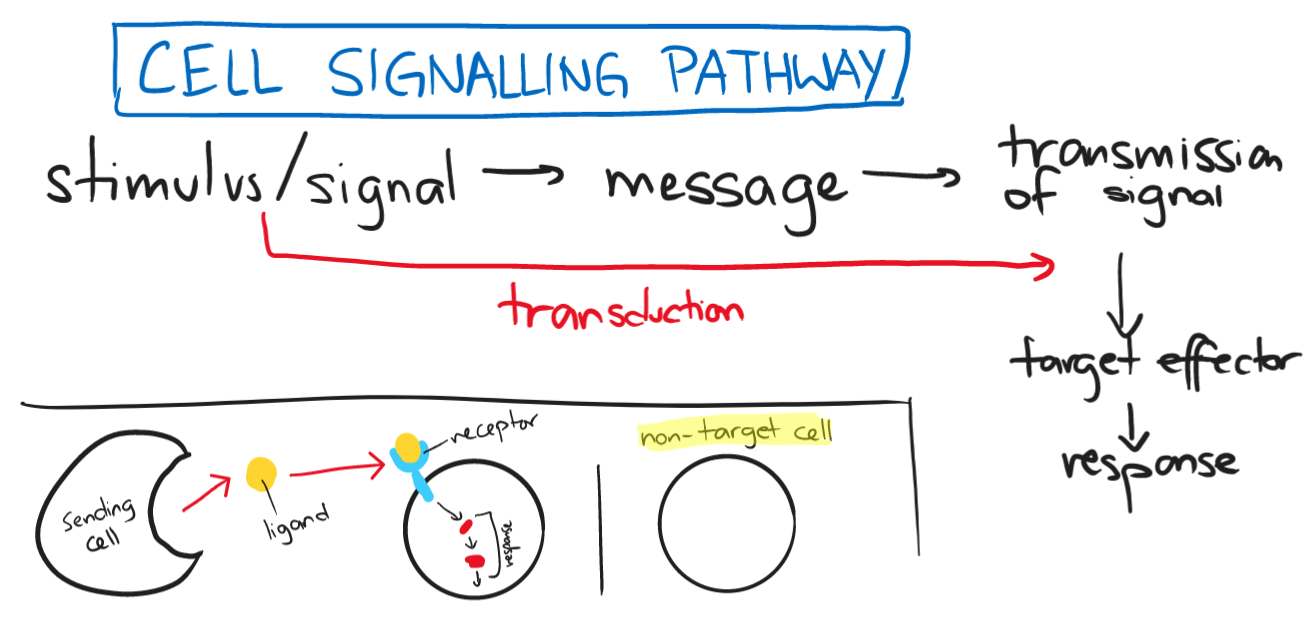CIE AS Biology 4.2: Cell Signalling
Cell signalling: the process where messages are sent to cells via a signalling pathway.
Cell signalling is important to allow multicellular organisms to control and coordinate cell activity, even if the required organs needed are large distances apart.
The cell signalling pathway is as follows:
a stimulus/signal is received by a receptor
- this is often known as a ligand
- the ligand is secreted from a call (the sending cell) and is then transported to the target cell
- they bind to receptors (glycolipids and glycoproteins) complementary to their shape i.e a substrate to an enzyme’s active site
the signal is converted into a ‘message‘ that is passed on via transduction
the ‘message‘ reaches its target (effector)
response is made
The pathway requires crossing barriers such as cell surface membranes. Hence, cell surface membranes are important in controlling the exchange of materials into and out of a cell.
